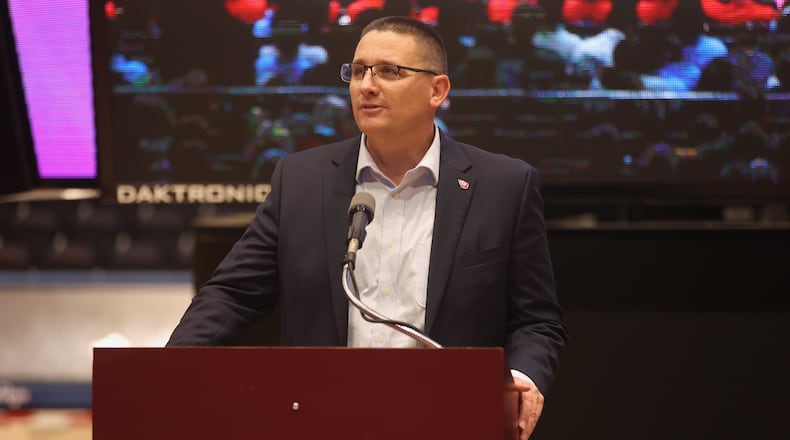“As I have shared with you before,” Sullivan wrote, “the major parts of the settlement are as follows:
• “Total back damages paid for former student-athletes of approximately $2.78 billion, to be paid over 10 years.
• “Going forward, NCAA and conference rules will permit direct payments by colleges and universities to student-athletes, up to amounts in the settlement agreement. Specifically, the settlement allows institutions to make payments to student-athletes up to a capped amount (currently about $22-$23 million per school) and that cap will be re-evaluated every few years. The cap is based on a formula of the average Power 5 school’s revenue, so major college football revenue accounts for a majority of that cap.
• “Scholarship limits will be eliminated in all sports, and roster limits will be established.”
Sullivan has often sent emails to season-ticket holders in recent years, especially during the name, image and likeness era, which started in the summer 2021, to let them know about changes coming to college athletics.
• Last March, he told them about NCAA rules changing in regards to UD being able to negotiate directly with recruits before they commit.
• In November 2022, Sullivan urged fans to support Dayton 6th, the NIL collective that launched that fall.
• In June 2022, one year into the NIL era, he provided an update on the impact of NIL on UD.
• In June 2021, Sullivan alerted fans to about the once-in-a-generation changes the NIL era would bring to college athletics.
In Sullivan’s latest email, he wrote about big changes coming to college athletics in 2025. If or when the final settlement is approved, which he expects to happen in April, the restriction on colleges paying athletes directly will be lifted.
“So what does this mean for Dayton Flyers basketball?” Sullivan wrote. “The total amount of additional payments and benefits schools will be permitted to provide directly to student-athletes is known as ‘the Pool,’ which will be capped at the same level for every institution. In the first year, the 2025-26 season, the Pool cap is projected to be approximately $22-$23M, meaning that each school may offer direct payments to athletes (in aggregate) up to $22-$23M per year, allocated by sport as each school finds appropriate. After the first year, the Pool cap will escalate at predetermined amounts by approximately $1M per year.
“Each school may decide whether and how much of these new benefits to provide to student-athletes, up to the Pool amount. The ‘Power Conference’ schools (Big Ten, SEC, ACC, Big 12, etc.) have generally announced their commitment to share revenue up to the Pool cap. Other schools are considering how to enter this market, or whether to enter it at all. Our focus with these payments will be for our competitive basketball teams.
“We want to maintain and advance our basketball programs. Our basketball performance is largely dependent on the talents and efforts of highly skilled student-athletes. Therefore, our continued ability to compete effectively depends on our ability to recruit high caliber players and to retain our existing roster. Players and their families want to be on the court, and they want to receive competitive packages and benefits. Players (both high school and transfer) being recruited by Dayton negotiate before they commit to the Flyers. Players and their families compare and contrast market values from schools they are considering.
“The ‘Power Conferences’ will use their size, lucrative media contracts and college football revenue to support their basketball teams. We will have to leverage our strengths as well and enter this space with confidence and boldness.
“Over the coming months, it is imperative for UD to develop revenue solutions to adapt to the new realities of college sports with appropriate aggressiveness, or we will fall behind in a hypercompetitive environment. Increases in season ticket prices and the Arena Seating Program will play an important role in our ability to compete in any player market that may develop, as will fundraising, corporate partnerships, licensing, merchandising, radio, television, digital and commerce rights, and conference distributions related to media rights. The success of our basketball programs is influenced by many factors, but this issue is rapidly rising into the most important of our critical success factors, along with coaching, facilities, fan support, academic excellence, and overall quality of campus life.
“We will not achieve our results with revenue and price increases alone; we will have to adjust costs as well across the Division of Athletics. The student-athlete experience and well-being of our students in sports other than basketball are also very important to us. However, maintaining or exceeding the current investment level in sports other than basketball will be challenging.
“More specific information will develop over the next few months, but I wanted to set the stage for what is ahead. Thank you for your patience and understanding as we navigate the most challenging and disruptive time in college sports history. We will find opportunity within the chaos and endeavor to be better than ever before.”
About the Author

